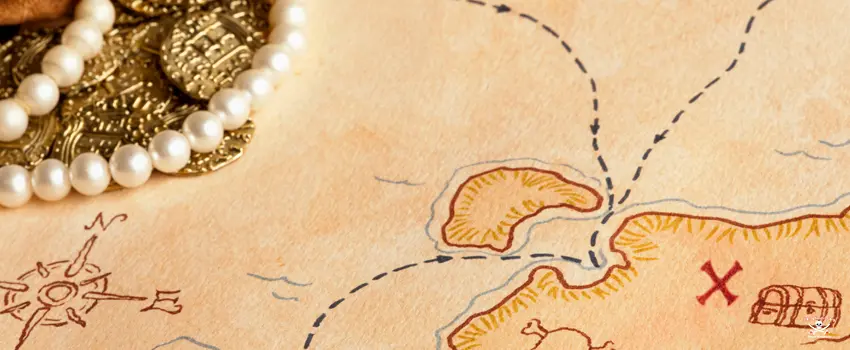Every kid dreams of finding a pirate’s hidden treasure. From Long John Silver’s hunt for gold in the pages of Treasure Island to rumors of jewels and coins buried on the Isle of Tortuga, wherever X marks the spot, treasure there will be.
Pirates and treasure go together like chocolate and peanut butter. The search for buried treasure drove many a pirate to fortune, but most to doom. From the exploits of famous pirates to modern-day treasure hunters, these are the stories of lost pirate hoards.
Treasure and Its Many Meanings
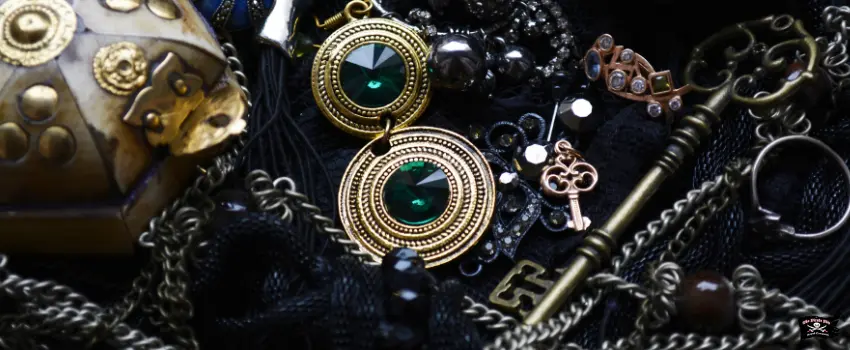
Pirates sailed the seas at the height of their reign of naval terror, attacking and plundering almost everyone who happened to cross their path. The Golden Age of Piracy (1650-1730) gave birth to the most famous pirates, whose reputations stand the test of time. Pirates and treasure, after all, make for a romantic story to pass down to generations. Most of these pirates sought treasure – which came in many different forms at the time.
Aside from the obvious gold coins, jewels, and other shiny objects, a pirate sought whatever was valuable. This included spices, tobacco, sugar, and even people in the slave trade. Due to the perishable nature of most of these goods, most are lost to time. Still, rumors and legends of massive troves of pirate treasure are the subjects of treasure hunts that continue to this day.
William Kidd and the (For Real) Buried Treasure
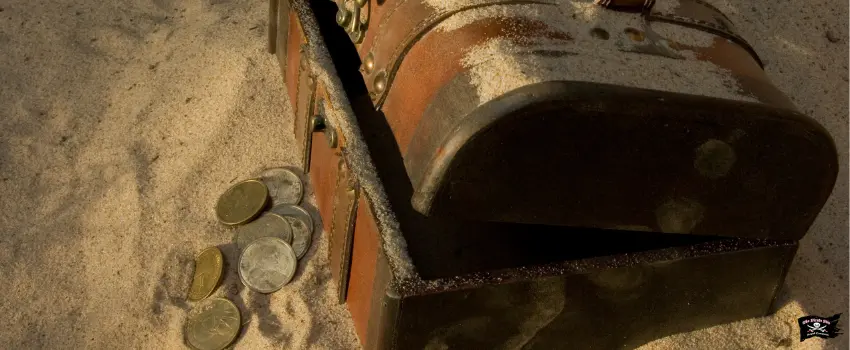
Legend has it that a pirate soon to meet his doom would find a secluded island to stow away his hoard of gold in hopes of retrieving it some time in the future. The trope permeates fictional accounts of pirate activity, including in the most famous of all pirate stories, Treasure Island. Only one pirate is known to have actually buried his treasure: Captain William Kidd, Scottish marauder and famous hider of gold.
Kidd began life at sea as a privateer, attacking ships and protecting trade routes for his wealthy benefactors. As his interest switched to collecting his own goods, he left the privateer profession and became a pirate. Over time, it’s said that Kidd collected up to 400,000 British pounds worth of gold.
Kidd was captured and taken to trial toward the end of the 17th century. His captors managed to find 10,000 pounds worth of treasure on Gardiner’s Island, off the coast of Long Island, New York, and used it as evidence against him. Rumors of this find being a mere fraction of his wealth aided him in his defense. Kidd attempted to use the location of the rest of his treasure as a bargaining chip. It didn’t work, however, and Kidd was executed in 1701.
To this day, treasure hunters scour the Caribbean and the East Coast of the United States in search of Kidd’s remaining buried treasures.
Blackbeard, The Devil, and Treasure
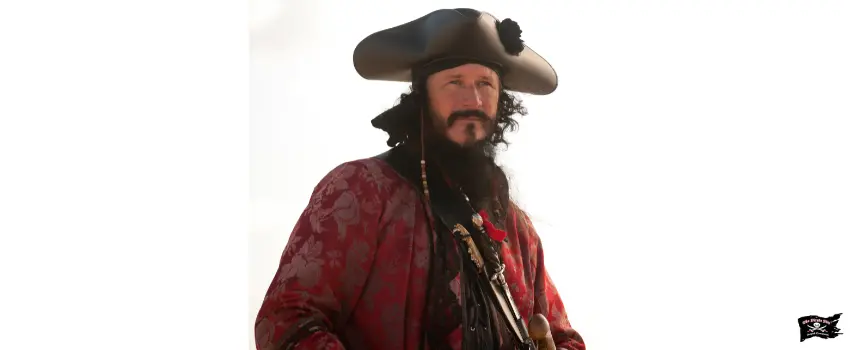
Of all the famous pirates for whom hidden treasure served as an inspiration, Edward “Blackbeard” Teach may have had the most cunning allure. If a ship left the West Indies replete with a cargo full of gold, the infamous Blackbeard followed.
In 1996, Blackbeard’s ship, The Queen Anne’s Revenge, was discovered off the coast of West Virginia. There, explorers found a mere handful of gold coins. So, where are Blackbeard’s pirate treasures? According to the man himself, His large hoard “lay in a location known only to him and the devil.”
The Caribbean Islands, Virginia’s Chesapeake Bay, and the caves of the Cayman Islands are treasure locations. After years of terrorizing and plundering gold from unsuspecting vessels, the treasure must surely be hidden somewhere. Of course, the hunt continues.
Lost & Found: The Whydah Galley Treasure
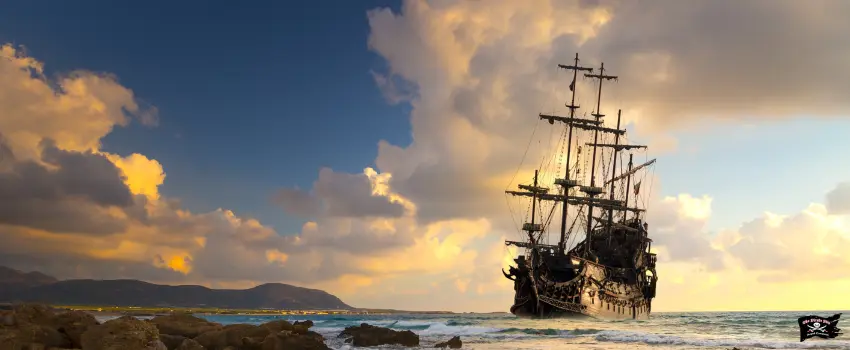
For 300 years, the Whydah Galley treasure remained buried beneath the sea. After sinking off the coast of Cape Cod in 1717, the ship’s legendary cargo hold full of gold brought treasure hunters from around the world. The Whydah Galley, under the flag of the infamous pirate Captain Sam “Black Sam” Bellamy, is the only recovered hoard to this date.
Black Sam’s riches came from the slave trade. On a return visit to North America, the Whydah Galley met its fate with a cargo hold full of gold. Tens of thousands of gold coins went down with the ship and remained the stuff of legends for over three centuries. In 1984, the long-sought-after hoard was found.
Explorers searching in the sand off Cape Cod first discovered the Whydah’s bell. Shortly after that, over 200,000 artifacts were uncovered. Muskets, silver coins, African jewelry, and 60 odd cannons were recovered, which alone had a value of over $100 million.
Among the treasure, six skeletons were also uncovered. Perhaps not wanting to part ways with his gold, Black Sam went to Davy Jones’s Locker alongside it.
The Hand of Gasparilla
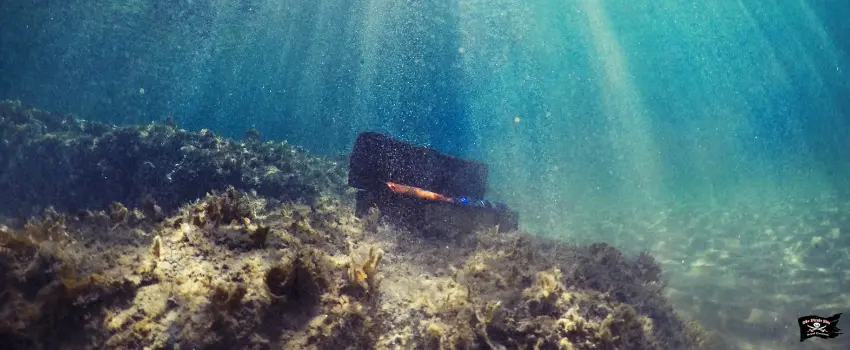
Tampa Bay’s own infamous pirate, José Gaspar, thrived off the Florida coast from the late 1700s to the early 1800s. Gasparilla’s haul of treasure had its own reputation for being massive. Many historians consider him the most successful pirate in history, which begs the question: where is his treasure?
In the 1930s, a local Tampa Bay construction worker uncovered a box while working on the Cass Street Bridge downtown. Inside it were Spanish and Portuguese coins, a map, and a severed hand wearing a ring bearing the inscription “Gasparilla.” The map is said to have pointed to the location of Gasparilla’s treasure: near the city’s Hillsborough River.
In 2015, the original owner’s grandchildren took the box to the local news, where it generated national interest. However, the Tampa Bay History Center determined that the items were from no earlier than the 1920s – depicting places and events occurring during a celebration of the pirate himself. The hand, they suggested, may have belonged to a monkey.
Still, the legend of Gasparilla’s treasure remains.
The Hunt Continues
Pirates and treasure hunting continue to appeal to the modern senses. Buried for centuries, perhaps the next big find is waiting beneath your feet. For a taste of what it might feel like to set sail in search of pirate treasures, hop aboard the Royal Conquest, the best pirate cruise in Madeira Beach.


